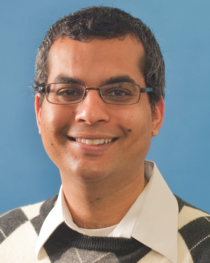Congestion in Large-Scale Transportation Networks: Analysis and Control
Fluid-like models, such as the Lighthill-Whitham-Richards (LWR) model and their discretizations like Daganzo’s Cell Transmission Model (CTM), have proven successful in modeling traffic networks. In general, these models are not linear; they employ discontinuous dynamics or nonlinear terms to describe phenomena like shock waves and phantom jams. Given the complexity of the dynamics, it is not surprising that the stability properties of these models are not yet well characterized. Recent results have shown the existence of a unique equilibrium in the free flow regime for certain classes of networks modeled by the CTM; however, these results restrict inflows to the system to be bounded or constant. Further, it is of interest to understand the system behavior in congested regimes since links in various practical networks are often congested.
Date and Time
Location
Hosts
Registration
-
 Add Event to Calendar
Add Event to Calendar
Loading virtual attendance info...
Speakers
Dr. Vijay Gupta of University of Notre Dame
Congestion in Large-Scale Transportation Networks: Analysis and Control
Fluid-like models, such as the Lighthill-Whitham-Richards (LWR) model and their discretizations like Daganzo’s Cell Transmission Model (CTM), have proven successful in modeling traffic networks. In general, these models are not linear; they employ discontinuous dynamics or nonlinear terms to describe phenomena like shock waves and phantom jams. Given the complexity of the dynamics, it is not surprising that the stability properties of these models are not yet well characterized. Recent results have shown the existence of a unique equilibrium in the free flow regime for certain classes of networks modeled by the CTM; however, these results restrict inflows to the system to be bounded or constant. Further, it is of interest to understand the system behavior in congested regimes since links in various practical networks are often congested.
Biography:
Vijay Gupta received his B. Tech degree from the Indian Institute of Technology Delhi, and his M.S. and Ph.D . degrees from the California Institute of Technology, all in Electrical Engineering. He has served as a research associate at the Institute for Systems Research at the University of Maryland, College Park and as a consultant to the United Technologies Research Center. Since 2008, he has been an Assistant Professor of Electrical Engineering at the University of Notre Dame. His research and teaching interests lie in the general area of intersection of control, communication and processing. Specific problems include fundamental performance limits for control across communication networks, network protocol design for estimation and control, control with time-varying processing resources, and design of scalable network communication protocols. He won the NSF CAREER award in 2009 and the Donald P. Eckman Award from the American Automatic Control Council in 2013.
Email:


